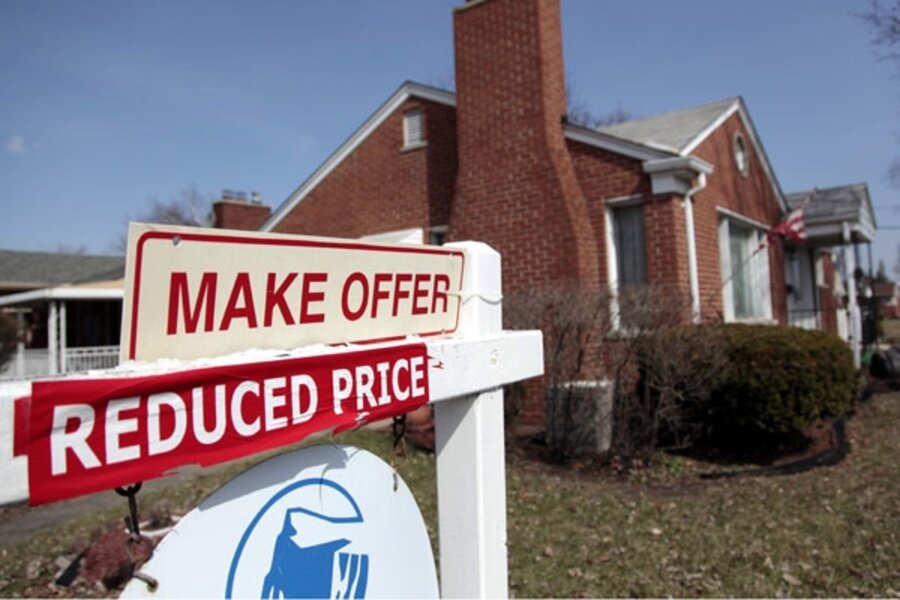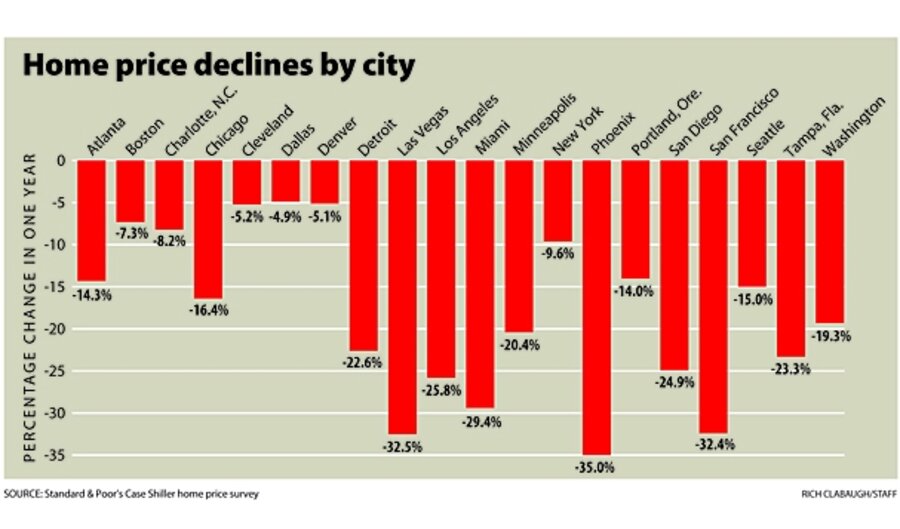Record tumble for home prices
Loading...
New housing data signals that the decline in US home prices isn’t over, a trend that’s adding to the financial stress on households and banks that have a stake in real estate.
Yet what’s hard news for homeowners is good for potential home buyers. The downward adjustment is a necessary one, many economists say, to help the troubled housing market stabilize.
According to numbers released Thursday, a 20-city average of home prices fell 2.8 percent in January, faster than the 2.6 percent drop recorded in December. Overall, the 20-city Case-Shiller index reported by Standard & Poor’s has fallen 19 percent in the past year and nearly 29 percent from its peak in 2006.
“The home price bubble has essentially vanished,” Michael Darda, chief economist at MKM Partners, writes in an analysis of the Case-Shiller data.
He’s optimistic that a combination of lower prices and low interest rates is starting to lure buyers back to the market – and will eventually work off the current large inventory of homes for sale.
“This is a powerful combination that we believe will create a bottom in the housing market in 2009,” Mr. Darda predicts.
He reckons that once the for-sale inventory drops to a seven- or eight-month supply of homes – down from about 10 months today – an end to home-price declines will be near.
Already, home prices are at historic levels of affordability. The interest rate on a 30-year fixed rate has fallen below 5 percent, thanks in part to the Federal Reserve’s entry into the mortgage market as a buyer of home-loan securities.
Another catalyst for housing demand: Economic stimulus legislation signed by President Obama includes a tax break worth up to $8,000 for first-time home buyers.
Still, there’s no law that dictates where home prices will go. A key question is whether home prices could overshoot on their way down – beyond merely reverting to a post-bubble “norm” – because of rising foreclosures and unemployment.
Policymakers have been trying to rein in this risk.
An Obama initiative, designed to help more families refinance their home loans to avoid foreclosure, promises to help reduce foreclosures somewhat. But the job market will also be a key driver of home prices. If more people lose jobs, loan defaults would be likely to rise, adding to the inventory of foreclosed properties on the market.
The housing picture varies greatly by city.
In the Case-Shiller survey, Dallas has fared the best among the 20 large metro areas, off just 10.8 percent from its peak. The Phoenix area is down the most, with a drop of 48 percent.
There’s some evidence that a bottoming-out process is already beginning.
In two hard-hit areas, Los Angeles and Las Vegas, the rate of home-price decline was smaller in January than in December.
Moreover, other housing-market reports, from realtors and the Census Bureau, show rising sales volume in February. A faster pace of sales is seen as a precursor to stabilization in prices.
More-affordable homes will represent a boon to several million Americans, many of them younger households. Many have already found bargains at post-foreclosure auctions.
The down side, of course, is that falling prices weaken the position of banks and have erased trillions of dollars in wealth from home-owning households – a hit to consumer confidence.






